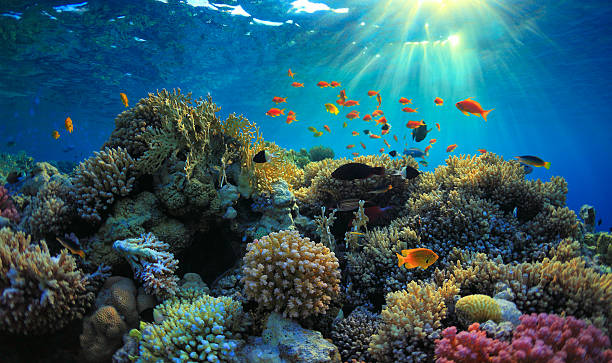The Hidden World of Coral Reef Fish Camouflage
Beneath the waves, a mesmerizing dance of deception unfolds in coral reefs worldwide. Fish employ an array of ingenious camouflage techniques, from color-changing abilities to mimicry of their surroundings. This article delves into the fascinating world of coral reef fish camouflage, exploring the intricate adaptations that have evolved over millions of years to ensure survival in one of the planet's most competitive ecosystems.

The Evolution of Camouflage in Coral Reef Ecosystems
Coral reef fish camouflage has evolved over millions of years, driven by the intense competition and predation pressures within these diverse ecosystems. The earliest forms of camouflage likely involved simple color matching, but as predators became more adept at detecting prey, fish developed increasingly sophisticated methods of concealment. Today, we observe a wide range of camouflage strategies, from basic background matching to complex mimicry and even transparency.
Masters of Color Change: Chromatophores and Rapid Adaptation
At the heart of many fish camouflage techniques lies the chromatophore, a specialized cell containing pigments that can be expanded or contracted to change the fish’s appearance. Species like the cuttlefish and octopus are renowned for their ability to rapidly alter their coloration and even texture to blend seamlessly with their surroundings. This remarkable adaptation allows them to evade predators and surprise unsuspecting prey with astonishing efficiency.
Mimicry: The Art of Imitation
Some coral reef fish have taken camouflage to the next level by mimicking other species or inanimate objects. The leaf scorpionfish, for example, bears an uncanny resemblance to a dead leaf, complete with intricate vein-like patterns and a mottled brown coloration. This deception allows it to lie in wait for prey while remaining virtually invisible to potential predators. Other species, like the mimic octopus, can impersonate multiple dangerous creatures, deterring would-be attackers through clever imitation.
Transparency and Reflective Camouflage
In the open waters above coral reefs, some fish have developed transparency as a form of camouflage. The glass catfish, with its see-through body, becomes nearly invisible in the water column. Other species, like the lookdown fish, use reflective scales to blend with the shimmering surface of the water when viewed from below. These adaptations make them incredibly difficult for predators to detect, providing a significant survival advantage.
The Role of Patterns and Textures
Many coral reef fish employ intricate patterns and textures to break up their outline and blend with the complex visual environment of the reef. The spotted seahorse, for example, sports a mottled pattern that mimics the appearance of coral polyps, allowing it to hide in plain sight among the reef’s branches. Similarly, the stonefish uses its rough, bumpy skin texture to resemble a coral-encrusted rock, making it virtually indistinguishable from its surroundings.
Camouflage in Action: Hunting and Survival Strategies
The camouflage abilities of coral reef fish play a crucial role in both hunting and survival. Predatory species like the frogfish use their camouflage to ambush prey, remaining motionless until an unsuspecting victim comes within striking distance. Conversely, smaller fish rely on their ability to blend in with coral formations to avoid becoming a meal for larger predators. This constant evolutionary arms race has resulted in ever more sophisticated camouflage techniques.
Conservation Implications and Future Research
As coral reefs face unprecedented threats from climate change and human activities, understanding the intricate relationships between fish and their environment becomes increasingly important. Research into coral reef fish camouflage not only provides insights into the complexity of marine ecosystems but also highlights the potential impacts of habitat degradation on these finely-tuned adaptations. Conservation efforts must consider the specific needs of camouflage-dependent species to ensure the preservation of these remarkable underwater communities.
The world of coral reef fish camouflage continues to captivate scientists and nature enthusiasts alike. As technology advances, researchers are uncovering new aspects of these remarkable adaptations, from the genetic basis of color-changing abilities to the complex visual systems that allow fish to perceive and mimic their surroundings. The study of coral reef fish camouflage not only enhances our understanding of marine biology but also inspires innovations in fields ranging from material science to military technology.





